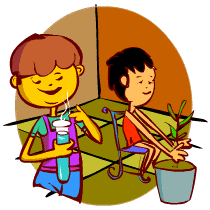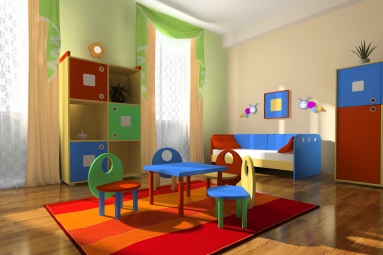It is a big hall where children sit by themselves or in groups – working. A boy of about 17 years is busy with an experiment with test tubes and keeps referring back to a card to check whether he is on the right track.

Namma Bhoomi for Working Children [Illustration by Anup Singh]
These are images of Namma Bhoomi, a residential school for working children in Udipi, Karnataka. Started seven years ago, it was designed to give working children a chance to continue their education while providing them vocational options, reported The Hindu newspaper.
The residential programme was meant to create an environment where caste and gender biases could be broken to evaluate a new value system.
The educational and training programme has four basic components. First, the curriculum is designed to suit different levels of comprehension. Children can enrol for the level of education that fits them best and the school organises for their coaching.
Secondly, the school organises general awareness programmes that address the developmental needs of children. These include programmes on gender sensitivity, sex education, information on reproduction, health and nutrition, environment education, yoga, physical education, oral history of the region, and useful skills like cooking, sewing, minor electrical repairs and first aid.
The third component deals with the need for empowering children. The school organises a range of activities and discussions on children’s rights, analysis of social and political structures, organisation building, resource management, and crisis and conflict management.
The school’s children have formed an union of working children, called Bhima Sangha, which serves as a children’s helpline, and a Makkala Panchayat (children’s panchayat) that helps them understand the political structure on a micro level. They appoint an adult as a Makkala Mitra (friends of children) who can be contacted for any form of help. They also bring out a wall newspaper called Bhima Patrika.
The fourth dimension centres on professional training. The school provides a range of skill training courses which teaches children the entire process involved in any trade – from raw materials needed to processing or designing a product, marketing it and managing finance and production. Students are enrolled as apprentices in their chosen trade for a year before they can take off on their own.
Namma Bhoomi did not have the present module of education when it was launched seven years ago. It has evolved over the years using feedback and experience of successive batches of students and modifying its programmes to cater to the students’ needs.
The newspaper report related the story of Hemanna, a model Namma Bhoomi student. He had done school till standard V before he dropped out. Then he started working in the fields. Even in the five years he spent in school, he had not even learnt to read and write, he told the newspaper.
He heard about the Bhima Sangha when he was 15 years old. He joined Namma Bhoomi and opted for civil works construction, which is not his caste occupation. He said he has been able to transcend the caste barriers to pick up a profession that is practiced by Muslims in the region.
Now, he can mark the land for a building, read a blueprint, make plans for doors and windows, use the filler slab technology that was developed by the famous Kerala-based architect Laurie Baker and work with brick as well as stone.










